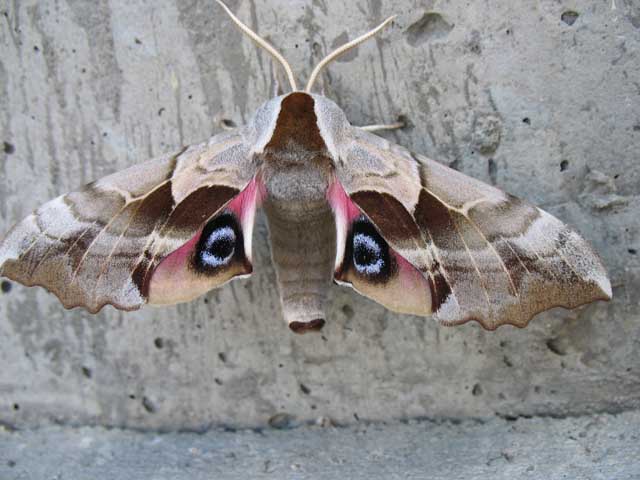Columbia County
Sphingidae
Smerinthus ophthalmica male, St. Helens, Columbia County, Oregon,
July 23, 2010, courtesy of Rodger Hallen.
|
|
Updated as per James P. Tuttle's The Hawk Moths of North America, July 23, 2010 Updated/dedicated as per personal communication with Rodger Hallen (Smerinthus ophthalmica, St. Helens, July 23, 2010); July 2010 Updated as per Butterflies and Moths of North America, formerly USGS, July 23, 2010 |

Smerinthus ophthalmica male, St. Helens, Columbia County, Oregon,
July 23, 2010, courtesy of Rodger Hallen.
This page is dedicated to Rodger Hallen for submission of beautiful image of Smerinthus ophthalmica, top of page.
Rodger writes, "Bill, just thought I would share this pic I took this morning in St Helens, Oregon. When I touched it, it
began to dance and showed its eyespots. very nice."
It is hoped that this checklist, with the thumbnails and notes, will help you quickly identify the moths you have encountered.
A WO" after the species name indicates that I have no confirmed reports of this species in Columbia County, but I (William Oehlke) expect that this moth is present.
Please help me develop this list with improved, documented accuracy by sending sightings (species, date, location), preferably with an image, via email to Bill Oehlke.
Sphinginae subfamily
Smerinthini Tribe:
Macroglossinae subfamilyDilophonotini tribe
Macroglossini tribe
|
This page is brought to you by Bill Oehlke and the WLSS. Pages are on space rented from Bizland. If you would like to become a "Patron of the Sphingidae Site", contact Bill.
Please send sightings/images to Bill. I will do my best to respond to requests for identification help.
Enjoy some of nature's wonderments: Saturniidae cocoons. Cocoons of the giant silkmoths may be purchased in the fall and winter. Big and beautiful giant silk moths will emerge in spring/summer. Read Actias luna rearing article. Additional online help available.